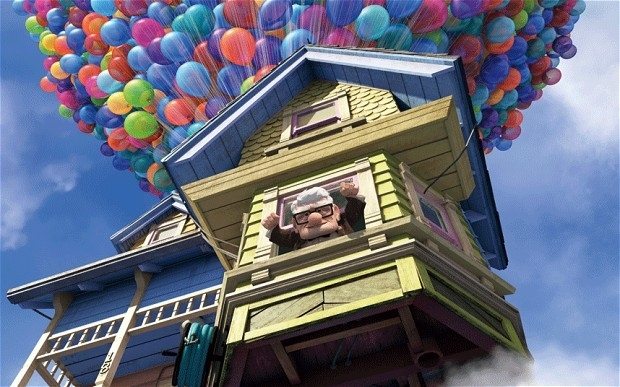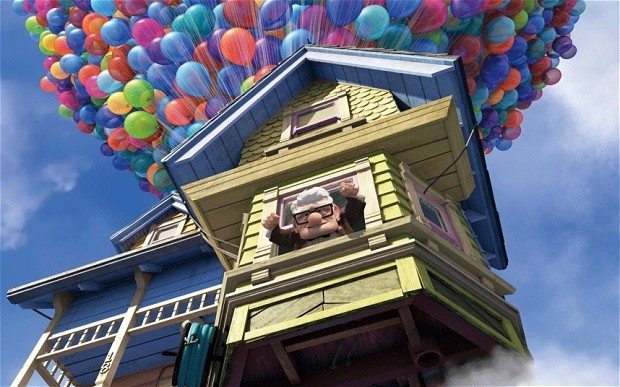The True-Life Tiny House Story that Inspired the Movie “Up”
We’ve all seen the charming Disney movie called “UP”, where an elderly man named Carl refuses to leave the small home that he and his wife lived in throughout their whole marriage, despite being asked to leave as the surrounding neighborhood is torn down for new construction. When he accidentally injures a construction worker over damage to his mailbox, a court orders him to leave his tiny life and instead move to a retirement home. And how could we forget the heart-wrenching scene when the builders are about to tear the house down; only to find that it’s gone and the clever homeowner has used thousands of helium balloons to float it up into the air. The charming story unravels as Russell, a young Wilderness Explorer, becomes an accidental stowaway in Carls’ flying house known as their “airship”. The movie follows the two as they make their way across the world to Paradise Falls, fulfilling a lifelong dream of Carl and his late wife Ellie.
The main character of that movie might seem extremely stubborn but did you know that this is actually based on a true story? 84-year-old Edith Macefield owned a 108-year-old farm home in Seattle where she lived in for over 50 years. In 2006, city developers planned on building a shopping mall and offered Macefield over a million dollars to buy her tiny house. Their intentions were to tear it down to make room for the mall.
 The David and Goliath story spread across the country like wildfire. After all, it was confusing why someone would turn down a large sum of money — 1 million dollars can go a long way!! And yet Macefield never agreed to the sale, despite the pressure and social norms. Instead she befriended the construction superintendent, Barry Martin, who became her caregiver when she was eventually diagnosed with pancreatic cancer. As the two spent more time together, Macefield told all sorts of stories about the amazing life she had lived. It was through these stories where Martin soon learned how Macefield obtained the home.
The home had originally belonged to Macefield’s mother. In 1965, her mother became ill and Macefield moved into the home in order to take care of her. A few years after she had moved in, her mother passed away within the home. After hearing the story Martin then realized why Macefield was so stubborn about selling her home.
The David and Goliath story spread across the country like wildfire. After all, it was confusing why someone would turn down a large sum of money — 1 million dollars can go a long way!! And yet Macefield never agreed to the sale, despite the pressure and social norms. Instead she befriended the construction superintendent, Barry Martin, who became her caregiver when she was eventually diagnosed with pancreatic cancer. As the two spent more time together, Macefield told all sorts of stories about the amazing life she had lived. It was through these stories where Martin soon learned how Macefield obtained the home.
The home had originally belonged to Macefield’s mother. In 1965, her mother became ill and Macefield moved into the home in order to take care of her. A few years after she had moved in, her mother passed away within the home. After hearing the story Martin then realized why Macefield was so stubborn about selling her home.
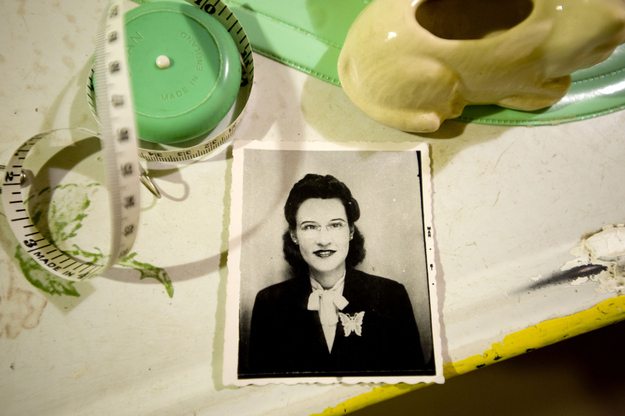
While still the owner of the house- Macefield passed away in 2008 and left everything she owned to Martin, including her tiny home that she refused to sell. Martin was so inspired by the experience that he wrote a book, “Under One Roof: Lessons I Learned from a Tough Old Woman in a Little Old House.” Eventually, Martin sold the home for $413,000 to a buyer. The home is now used for real estate training as well as a community center. Macefield touched the hearts of so many in the Seattle community that in 2013 the city put together the Macefield Music Festival. Some people have gone so far as to remember Macefield by getting a tattoo of the home that still stands in between two massive buildings.
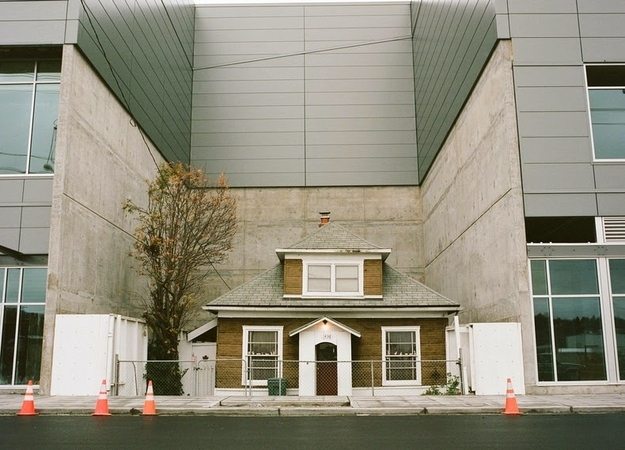
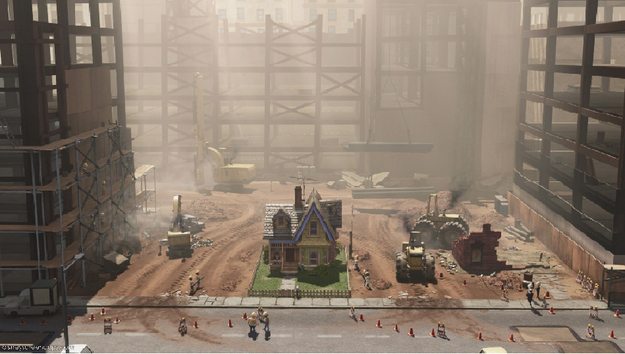
The tiny life may seem odd to outsiders. The psychology behind the tiny house movement has a lot to do with letting go of unnecessary possessions and disconnecting from the modern world. Tiny house owners all have different reasons for downsizing. Some want to travel more, or others begin to feel overwhelmed by possessions taking up space in their homes. For example, think about if you own a pool table but never use it. Does it make any sense to keep it? Or, would you rather sell it and put the money towards that cross-country trip you have always wanted to go on. Sometimes living with less, means you get to live more.
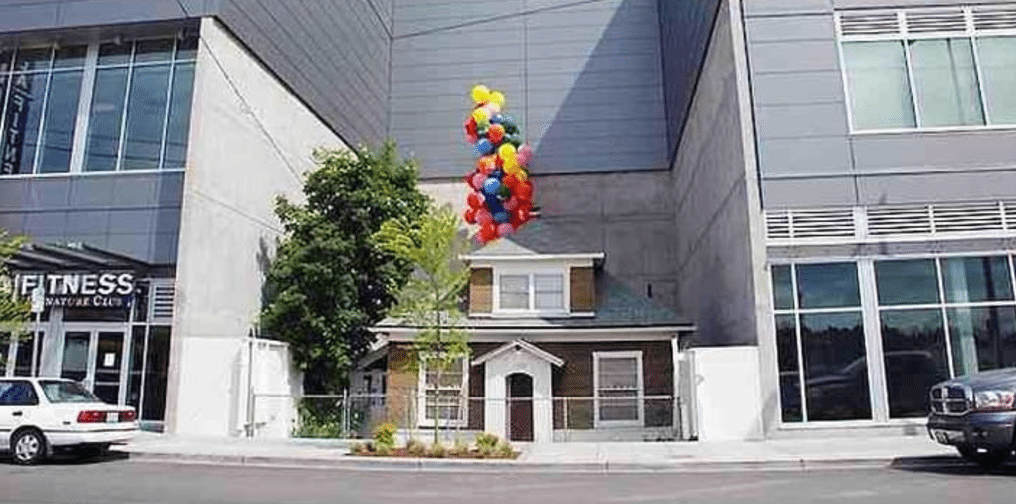 Society teaches the idea that someone who lives in a mansion is set for life. But that is not the case anymore. Someone who lives in a tiny house now has the same opportunities. A tiny house allows someone to travel more and get the most out of life. The only difference is that the tiny life is one that has fewer possessions than someone living the “big life.” Today, visitors commemorate her home with messages written on balloons, creating a scene similar to the movie “Up.”
Society teaches the idea that someone who lives in a mansion is set for life. But that is not the case anymore. Someone who lives in a tiny house now has the same opportunities. A tiny house allows someone to travel more and get the most out of life. The only difference is that the tiny life is one that has fewer possessions than someone living the “big life.” Today, visitors commemorate her home with messages written on balloons, creating a scene similar to the movie “Up.”
 The David and Goliath story spread across the country like wildfire. After all, it was confusing why someone would turn down a large sum of money — 1 million dollars can go a long way!! And yet Macefield never agreed to the sale, despite the pressure and social norms. Instead she befriended the construction superintendent, Barry Martin, who became her caregiver when she was eventually diagnosed with pancreatic cancer. As the two spent more time together, Macefield told all sorts of stories about the amazing life she had lived. It was through these stories where Martin soon learned how Macefield obtained the home.
The home had originally belonged to Macefield’s mother. In 1965, her mother became ill and Macefield moved into the home in order to take care of her. A few years after she had moved in, her mother passed away within the home. After hearing the story Martin then realized why Macefield was so stubborn about selling her home.
The David and Goliath story spread across the country like wildfire. After all, it was confusing why someone would turn down a large sum of money — 1 million dollars can go a long way!! And yet Macefield never agreed to the sale, despite the pressure and social norms. Instead she befriended the construction superintendent, Barry Martin, who became her caregiver when she was eventually diagnosed with pancreatic cancer. As the two spent more time together, Macefield told all sorts of stories about the amazing life she had lived. It was through these stories where Martin soon learned how Macefield obtained the home.
The home had originally belonged to Macefield’s mother. In 1965, her mother became ill and Macefield moved into the home in order to take care of her. A few years after she had moved in, her mother passed away within the home. After hearing the story Martin then realized why Macefield was so stubborn about selling her home.

Each time they offered Macefield money, she refused.
While still the owner of the house- Macefield passed away in 2008 and left everything she owned to Martin, including her tiny home that she refused to sell. Martin was so inspired by the experience that he wrote a book, “Under One Roof: Lessons I Learned from a Tough Old Woman in a Little Old House.” Eventually, Martin sold the home for $413,000 to a buyer. The home is now used for real estate training as well as a community center. Macefield touched the hearts of so many in the Seattle community that in 2013 the city put together the Macefield Music Festival. Some people have gone so far as to remember Macefield by getting a tattoo of the home that still stands in between two massive buildings.
“The shopping mall was still constructed, but carefully so without disrupting Edith’s home or small yard. Edith’s resilience against corporate dominance quickly turned her house into a symbol of inspiration. So much so, Pixar’s film ‘Up’ is modeled after Macefield’s home.”


Macefield’s fight wasn’t about the amount of money she was offered, it was about the emotional and sentimental value the home was worth. Her story is a great example of the tiny life movement.
The tiny life may seem odd to outsiders. The psychology behind the tiny house movement has a lot to do with letting go of unnecessary possessions and disconnecting from the modern world. Tiny house owners all have different reasons for downsizing. Some want to travel more, or others begin to feel overwhelmed by possessions taking up space in their homes. For example, think about if you own a pool table but never use it. Does it make any sense to keep it? Or, would you rather sell it and put the money towards that cross-country trip you have always wanted to go on. Sometimes living with less, means you get to live more.
The tiny life is about standing up to a culture where a person’s happiness depends on the amount of money they have.
 Society teaches the idea that someone who lives in a mansion is set for life. But that is not the case anymore. Someone who lives in a tiny house now has the same opportunities. A tiny house allows someone to travel more and get the most out of life. The only difference is that the tiny life is one that has fewer possessions than someone living the “big life.” Today, visitors commemorate her home with messages written on balloons, creating a scene similar to the movie “Up.”
Society teaches the idea that someone who lives in a mansion is set for life. But that is not the case anymore. Someone who lives in a tiny house now has the same opportunities. A tiny house allows someone to travel more and get the most out of life. The only difference is that the tiny life is one that has fewer possessions than someone living the “big life.” Today, visitors commemorate her home with messages written on balloons, creating a scene similar to the movie “Up.”

